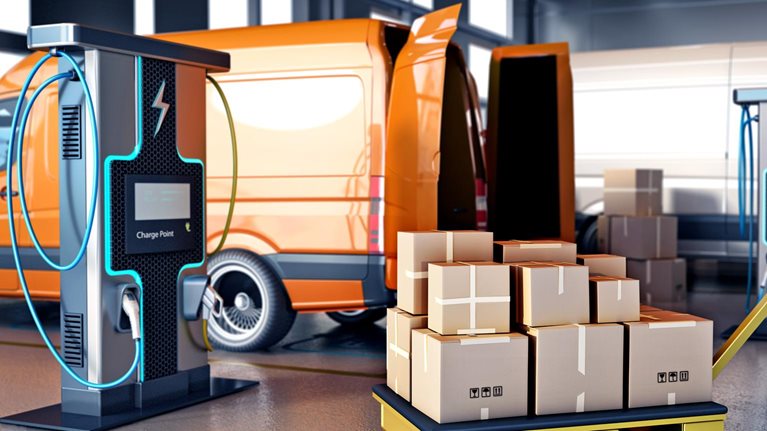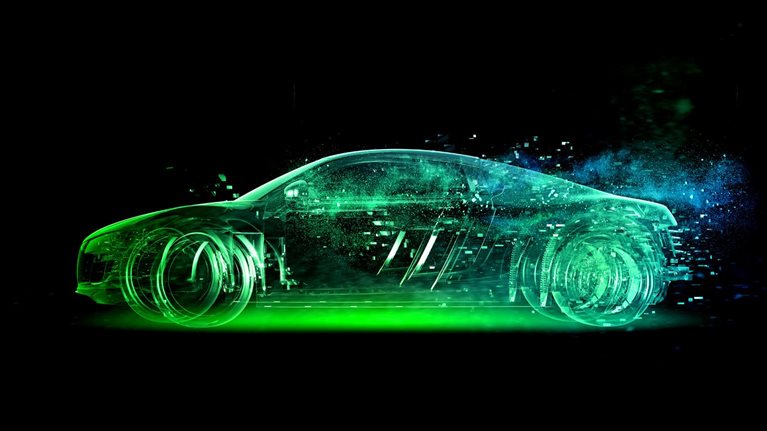Norway leads the world in electric vehicle (EV) adoption: EVs account for more than 20 percent of passenger vehicles in the country and more than 80 percent of new vehicles sold.1 And adoption is on the rise, making up about 8 percent of new vehicle sales—even in the harder-to-electrify heavy-duty vehicle segments.2 The country’s effective economic and social incentives, its reliable power grid, and its demographics have all contributed to its adoption success. On the other hand, scaling Norway’s EV charging infrastructure (EVCI) to keep pace with its mounting demand has proved more problematic. Heeding the pitfalls along Norway’s path to at-scale EVCI offers valuable insights for fuel retailers, automotive OEMs, utilities, and startups vying for EVCI primacy in other markets.
Since the 1990s, the Norwegian government has been taking actions to accelerate the EV transition3; it was one of the first countries to create tax incentives for EV purchases. Other consumer-oriented incentives to purchase EVs followed, from reduced road tolls to free municipal parking and use of bus lanes.4 As EV adoption increased, these incentives were gradually phased out. Another contributing factor to Norway’s adoption success is its abundant hydropower, which accounts for more than 90 percent of the country’s power generation.5 This clean energy source supports a stable power system that enables a low-cost, reliable power supply for EVs. Norway’s public charging stations benefit from a reliable power grid, as do the relatively high percentage of single-family homes capable of charging an EV.6
Norway’s EVCI is expanding rapidly to meet its growing demand. To date, more than 22,000 public chargers have been installed to service the more than half a million EVs on the country’s roadways.7 More chargers are quickly cropping up at malls, gyms, and universities and on highways. And, in several space-constrained urban gas stations, compact EV chargers are replacing much larger gas tank and pump arrangements. Nonetheless, the expansion has not come without significant growing pains, and scaling the system will take some time.
In this article, we’ll examine the country’s EVCI landscape, review implications of past and current circumstances, and discuss approaches to help EVCI players in other markets potentially circumvent similar pitfalls and sharpen their competitive edge.
Norway’s efforts to scale EVCI to meet demand
Many of Norway’s public EV charging sites evidence the country’s relatively rapid, dramatic adoption of EVs and the sometimes ad hoc approaches taken to meet the resulting charging demand. These circumstances have contributed to Norway’s current highly fragmented system of EV charging stations. A closer look at this market reveals the benefits of taking early, decisive action to create a scalable strategy—one informed by deep insights and fortified by solid yet flexible technological and operational capacity.
Adoption rate increases the need for public charging, and high margins persist
It took four years to sell the first 10,000 EVs in Norway, between 2008 and 2011. That same number of EVs sold in about four weeks in 2022, illustrating the acceleration in adoption.8 But EV sales rose sharply in Norway once the total cost of EV ownership reached parity with internal-combustion-engine (ICE) vehicle ownership. This helped trigger a spike in demand for charging stations, suggesting competitive advantages for those who invest in and scale EV charging capacity before EVs achieve cost parity with ICE vehicles in their own markets.
Price premiums at Norway’s public charging stations are compelling evidence of the early-mover advantage. In Norway, on-the-go charging (on highways and at fuel stations) costs consumers three to four times more than charging their EVs at home.9 McKinsey’s Global Electric Vehicle Charging Infrastructure model estimates that by 2030, on-the-go charging and destination charging (at malls, cinemas, and restaurants, for example) in Norway will make up around three-quarters of EV charging profit pools10 but only around 40 percent of total power demand. In contrast, home charging will provide one-quarter of power demand but will account for only one-tenth of profit pools (exhibit).

Margins may tighten as more public chargers are put in place. Nevertheless, public EV charging is likely to remain profitable, driven by the limited availability of attractive charging locations and progressively drawing interest from investors and operators over the long term—in Norway and around the world.
Competition intensifies with evolving customer expectations
A range of new and established enterprises are competing to meet the rising demand for EV charging in Norway. Fuel retailers are adding EV chargers to their stations, while automotive OEMs are taking advantage of their access to new-vehicle purchasers by offering wall chargers for home use and venturing into public charging. Utilities are likewise drawing on existing customer relationships to establish themselves in the home charging and public charging markets. Beyond incumbents, a range of independent and energy company–backed players are entering the EVCI space, including Mer, Easee, Zaptech, and Aneo.
Because the scope of unmet need has been high, all players have gained some traction in Norway’s EVCI market. Nevertheless, a clear leader has not emerged, particularly as the nascent market focused on meeting the needs of only early-adopting customers. Today, competition is intensifying as demand grows and customers’ expectations become increasingly sophisticated, putting pressure on operators to deliver exceptional experiences. This dynamic will likely play out elsewhere as EV adoption, technology, and customers’ expectations evolve.
Optimized locations and operations enhance customer satisfaction
There are a variety of public charging vendors to choose from in Norway, and therein lies part of the problem: customers find it inconvenient to maintain multiple mobile apps. And widespread system glitches—including limited options for direct payment, poorly designed parking spots, short charging cables, and malfunctioning hardware—frustrate customers and can heighten their anxiety over charger availability. In Norway’s latest annual EV charging survey, half of respondents claimed that fast chargers occasionally do not work.11
Further trying customers’ patience and creating anxiety are Norway’s highly dispersed EV charging system and the relatively low numbers of chargers per site, both of which create queuing and extend wait times. Larger sites with higher concentrations of chargers are needed, rather than smaller sites spread across the country. Addressing this need presents challenges for charging site operators that initially planned to host a few chargers on small sites; they now struggle to install new chargers and to upgrade on-site energy management at larger sites. Nevertheless, Norway’s operators are now correcting course, introducing a range of large, purpose-built EV charging sites in high-use locations, especially along highways.
Analysis has shown that EV charger utilization depends largely on time of day and location of chargers.12 EV charging utilization is hyperlocal. The utilization of a charger located on the same block as a busy coffee shop or movie theater could be markedly different from that of a charger situated two blocks away from these locations. Identifying and securing the most popular sites early on can thus offer competitive advantage, especially in space-constrained urban centers and on highways. And as competition over prime public charging locations intensifies, it becomes increasingly important for operators to own or contract the sites for extended periods. This helps avoid potential non-renewals of contracts due to site owners opting to establish their own charging operations at these locations.
Certain areas may support charging solutions beyond placing chargers at service stations or in front of gyms and hotels. These solutions might include creating large-scale, multipurpose, public e-mobility hubs in the most popular EV charger locations and integrating battery swaps and car sharing with other commercial and residential property uses. Opportunities to create such multiuse stations in Norway are on the rise. These stations’ potential to boost EV adoption, increase driver satisfaction and confidence, and diversify options for investment and public amenities is considerable. Additionally, emerging urban-mobility developments such as autonomous vehicles will give rise to further innovation and investment in charging infrastructure. As new technologies develop, nimble companies with established EV positions will be best situated to adapt to them and gain market advantage.
Tailoring offerings to customer needs can help increase utilization
Charging stations may be falling short when it comes to meeting the needs of Norway’s increasingly diversified EV driver demographic. On any given day, a charging station’s customers could include a taxi driver between fares, a family on a long-distance trip, or a delivery person between stops. Each of these customers has different location preferences and charging needs. A family on vacation, for example, may be most interested in nearby venues to stretch their legs or grab a bite to eat and less interested in charger speed. On the other hand, someone driving a company-owned vehicle might place a high premium on charger speed and options to bill both public and home charging to their company’s account. Unfortunately, many operators do not offer integrated customer accounts that combine home and public charging, nor do they tailor their offerings to different customer segments. The consequences of not diversifying offerings based on customer archetypes can include underused services and low conversion ratios.
Some operators are installing super-fast chargers to signal to EV drivers their leadership and superior capacity and to prepare for more advanced vehicles. More than 200 super-fast chargers13 have been installed at public charging stations across Norway, even though the top 20 EV models available in the country can use, on average, about half of that capacity.14 This potentially effective marketing tactic to align individual operators with the next generation of EVs is not currently used by most operators in Norway.
Gaining a competitive edge through early, informed actions
Prepare at the outset for speed and scale: this is perhaps the central conclusion to draw from Norway’s EV charging evolution.
Positioning for success in the quickly accelerating and evolving EV charging market often means creating a business from scratch while simultaneously and rapidly growing its market position and enhancing its capabilities. To achieve this, starting out with a comprehensive strategy is advisable. Ideally, this strategy is grounded in a deep understanding of everything from value pools to target segments and time investments, all based on specific signposts. Once a strategy is in place, well-defined commercial offerings tailored to each target segment can be established. Each offering should include a clear customer value proposition, pricing, and integrated customer journeys.
At the same time, robust operational capabilities should be built for everything from charger maintenance to contact center design. As Norway’s experience shows, selecting the appropriate charging point management system (CPMS), backend software, operating model (make versus buy), and hardware can be critical because they directly affect customer satisfaction. Optimal locations, layouts, grid availability, and charger mix at each location heavily influence capital expenditures. Likewise, a sound power procurement, trading, and hedging strategy working in tandem with rigorous on-site energy management are central to optimizing power costs. Finally, an agile organizational approach is fundamental to fully realizing all operational capabilities and scaling rapidly in the dynamic, transitioning EVCI landscape.
Examining Norway’s EVCI development illustrates that investors and operators who consider and apply now the experiences of early-adopting EV markets can better position themselves as leaders in the swiftly transitioning mobility space. Once they are clearly identified and strategies are put in place to address them, pitfalls can be avoided.
New entrants and established players on the leading edge of EV charging are setting ambitious targets in an increasingly volatile vehicle electrification environment where conditions change much faster than in past decades. They are defining proactive strategies to occupy and maintain key control points such as location and customer interface and are investing heavily in building and scaling core capabilities such as hardware, software, digital, and operations. In doing so, they are setting the pace and securing the future of the next phase in the EV evolution.


